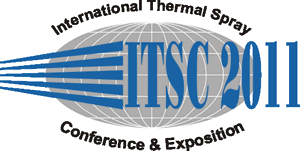| Abstract: |
The suitability of a material to be sprayed by the Cold Gas Spraying process mainly depends on its capacity to deform plastically; thus, its lattice structure is important because it defines the more or less quantity of slipping planes that will induce a more or less easy deformation. In order to define the critical velocity for the selected material, the feedstock powder characteristics such as particle size and distribution, morphology, melting point and density as well as substrate material must be importantly taken into consideration. Then, for a certain material the nature, temperature and pressure of the operating gas, nozzle shape, stand-off distance and feed rate must be then optimized to improve efficiency and lead to good bonding.
The aim of this study is to analyse the deposition behaviour of two FCC materials (aluminuim and nickel). First, the more or less plastic deformation of the particles has been compared through the wipe tests onto mirror-polished low-alloyed carbon steel substrates, defining the jetting out phenomena by confocal microscopy. Secondly, the spraying conditions are optimized in order to obtain highly dense coatings. The evaluation of the coating density is carried out by means of optical and scanning electron microscopy of the as cross-polished and etched sections as well as fractured sections, and it will be discussed in terms of the large difference in their melting points and how this influence on the interparticle bonding. Moreover, by undergoing some corrosion tests, it is observed the low the permeability of such deposits, which enables to measure the occurrence of more or less linked porosity. The strength adhesion among particles has also been evaluated by adherence tests.
|
|
